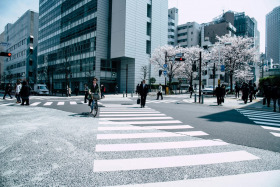- December 27th, 2024
- 0 Comments

A study published in Travel Behaviour and Society suggests that involving road users in the design process of pedestrian crossings leads to safer and more effective safety interventions. Local transportation professionals and road users—workers and students—were asked to propose safety measures at four highway sites in Bangladesh. The user-generated designs, which emerged from design workshops and focus group sessions, were found to be more effective than those suggested by professional engineers alone.
Experts who assessed the suggestions noted significant usability improvements in the co-designed interventions. The study also found that integrating a behavioral change model into the co-design process enhanced the effectiveness of the interventions. Stakeholders, including highway department officials and industry representatives, recognized the benefits of user involvement, such as increased safety, a sense of shared responsibility, and higher likelihood of use.
Although some user-generated designs were deemed less feasible than the engineers', many were considered equally or more feasible. The consensus among stakeholders is that the co-design approach is practical for achieving safe infrastructure. The researchers advocate for the inclusion of vulnerable and marginalized groups in the co-design process and suggest revising road safety curricula to address the specific needs and challenges of different user groups.
The study reinforces the value of engaging local road users in the design of transportation infrastructure by suggesting the benefits of an inclusive planning approach that considers the lived experiences of all commuters and involving a broad range of stakeholders. As a model for this type of collaborative approach that has worked to incorporate perspectives from all those who navigate Oakland's streets daily, including individuals with disabilities and marginalized groups, our region continues to develop a more sustainable and equitable transportation system that meets the needs of Oakland's multimodal commuters.












